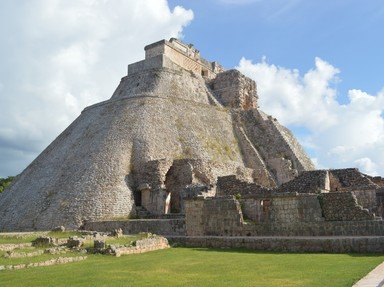Quiz Answer Key and Fun Facts
1. The ancestral home of the Aztecs is known as Aztlán. Although the derivation isn't universally agreed, which of these is one of those commonly accepted?
2. In which present-day country did the nomadic Aztecs finally settle?
3. What was the capital city of the Aztec empire?
4. Huitzilopochtli was the Aztec god of the sun and which of these?
5. There is relatively little left of Lake Texcoco, home to the Aztecs' capital city. What is located there now?
6. What was the language that the Aztecs spoke?
7. Although they didn't build them, the Aztecs did give us the names by which the two main pyramids at Teotihuacan are still known. What are they?
8. Montezuma is also known as Moctezuma. The Aztecs had more than one emperor with this name.
9. Although many Aztecs were killed in fighting or died from from mass executions, they also suffered by having no immunity to diseases brought by the Spanish invaders. Which of these was the most deadly?
10. Who was the conqueror (conquistador) who brought about the end of the Aztec empire?
Source: Author
rossian
This quiz was reviewed by FunTrivia editor
gtho4 before going online.
Any errors found in FunTrivia content are routinely corrected through our feedback system.
